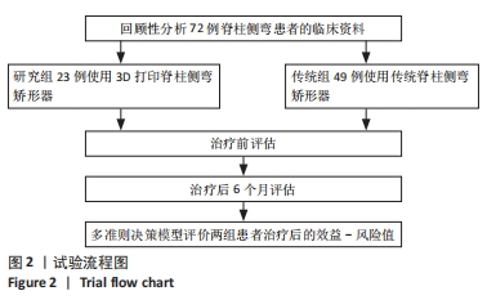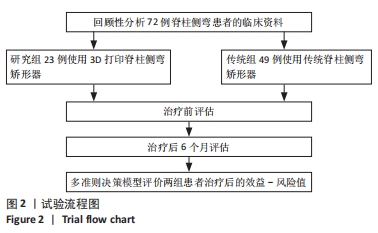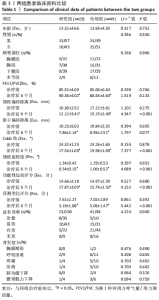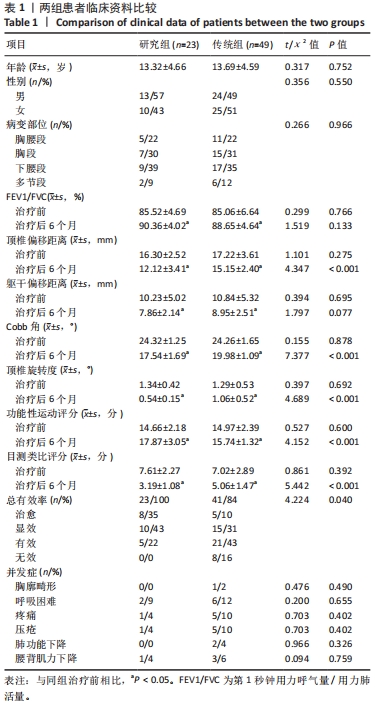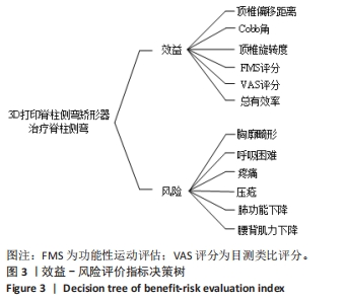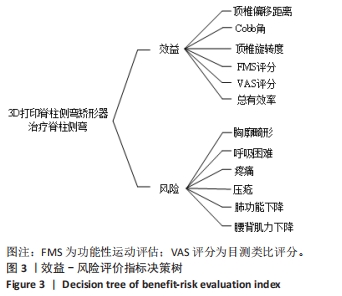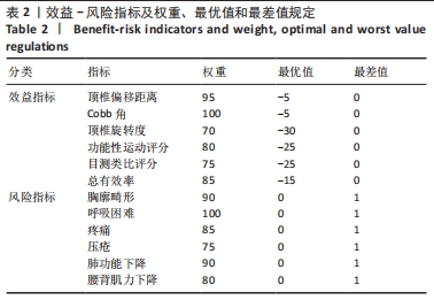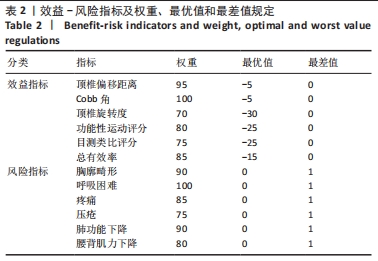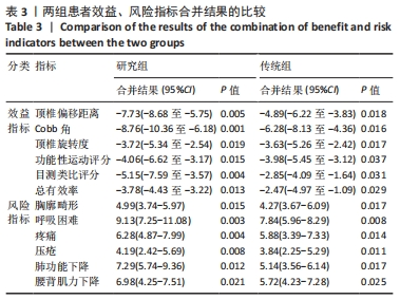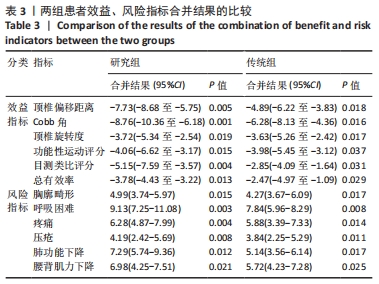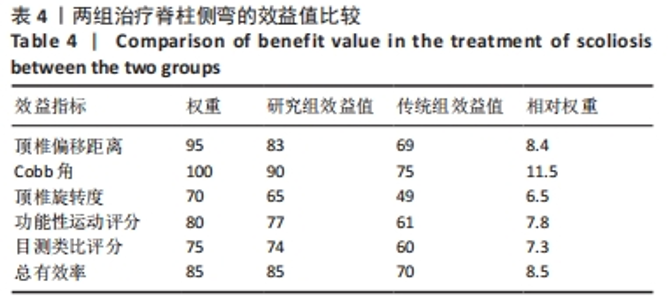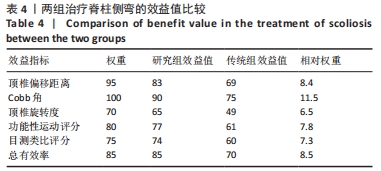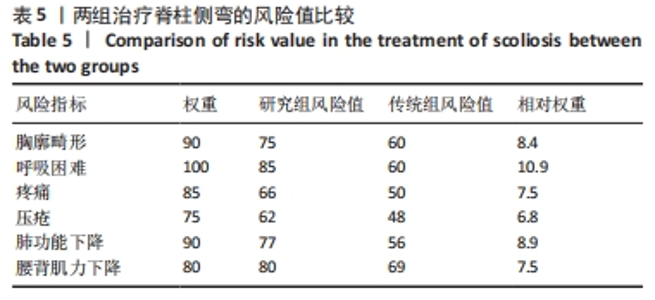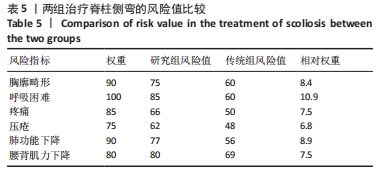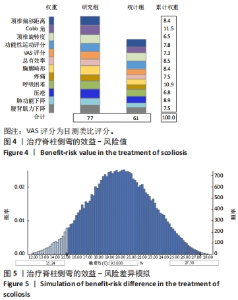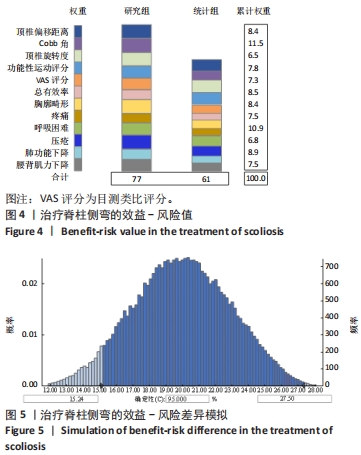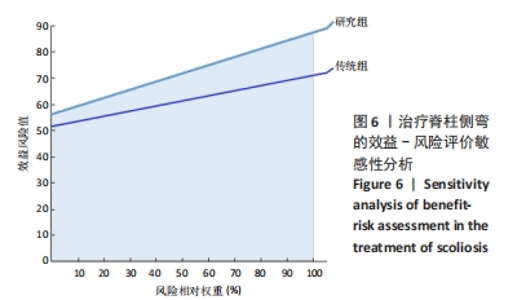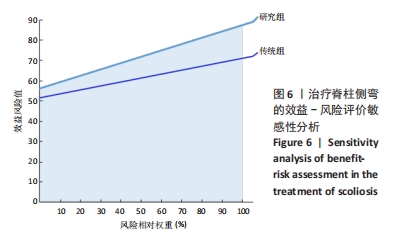[1] MESITI BL. Scoliosis: An Overview. Radiol Technol. 2021; 93(1):55-72.
[2] LINDEN GS, EMANS JB, KARLIN LI, et al. Early Adherence to Prescribed Brace Wear for Adolescent Idiopathic Scoliosis Is Associated With Future Brace Wear. Spine (Phila Pa 1976). 2023;48(1):8-14.
[3] PENG Y, WANG SR, QIU GX, et al. Research progress on the etiology and pathogenesis of adolescent idiopathic scoliosis. Chin Med J (Engl). 2020;133(4):483-493.
[4] KIM HS, WU PH, LEE YJ, et al. Technical Considerations of Uniportal Endoscopic Posterolateral Lumbar Interbody Fusion: A Review of Its Early Clinical Results in Application in Adult Degenerative Scoliosis. World Neurosurg. 2021;145:682-692.
[5] BUELL TJ, BUCHHOLZ AL, MAZUR MD, et al. Kickstand rod technique for correcting coronal imbalance in adult scoliosis: 2-dimensional operative video. Oper Neurosurg (Hagerstown). 2020;19(2):E163-E164.
[6] JIN H, ZHANG Z, GAO Y, et al. Case series: 3D printed orthopedic brace combined with traditional manipulative physiotherapy to treat new-onset scoliosis in adults. Medicine (Baltimore). 2022;101(1):e28429.
[7] CHU EC. Improvement of quality of life by conservative management of thoracic scoliosis at 172°: a case report. J Med Life. 2022;15(1):144-148.
[8] LA MAIDA GA, GALLAZZI E, PERONI DR, et al. Does Risser Casting for Adolescent Idiopathic Scoliosis Still Have a Role in the Treatment of Curves Larger Than 40°? A Case Control Study with Bracing. Children (Basel). 2022;9(5):760.
[9] KURU ÇOLAK T, AKÇAY B, APTI A, et al. The Effectiveness of the Schroth Best Practice Program and Chêneau-Type Brace Treatment in Adolescent Idiopathic Scoliosis: Long-Term Follow-Up Evaluation Results. Children (Basel). 2023;10(2):386.
[10] WONG LPK, CHEUNG PWH, CHEUNG JPY. Curve type, flexibility, correction, and rotation are predictors of curve progression in patients with adolescent idiopathic scoliosis undergoing conservative treatment: a systematic review. Bone Joint J. 2022;104-B(4):424-432.
[11] 谭志, 陈俊伟, 余伯亮, 等. “通督五线”针法配合Schroth训练治疗青少年特发性脊柱侧弯临床观察[J]. 上海针灸杂志,2021,40(5): 611-615.
[12] 任建荣. 正脊调曲法联合针灸治疗青少年特发性脊柱侧弯疗效观察[J]. 山西中医药大学学报,2021,22(3):187-189.
[13] 王红亚, 孔雅萍. 中医推拿按摩对脊柱侧弯行3D打印技术矫形术患者脊椎功能康复效果的影响[J]. 中国骨伤,2022,35(1):33-37.
[14] 王洪, 代璐, 曲永红. 基于行动研究法探讨脊柱侧凸患者术后晕厥相关中医护理干预[J]. 辽宁中医药大学学报,2021,23(11):215-217.
[15] ZHANG J, CUI X, CHEN S, et al. Ultrasound-guided nusinersen administration for spinal muscular atrophy patients with severe scoliosis: an observational study. Orphanet J Rare Dis. 2021;16(1):274.
[16] 陈燕红, 汤样华, 王红亚, 等. 有氧耐力训练联合电针刺激疗法对脊柱侧弯患者术后康复效果的影响[J]. 中华全科医学,2022,20(7): 1215-1217+1262.
[17] 邓丽丹, 冯晓艳, 丁燕红. 核心肌力训练对轻中度青少年特发性脊柱侧弯患儿肌群肌力改善及Cobb角的影响[J]. 护理实践与研究, 2021,18(5):649-652.
[18] 孙武东, 蔡倩, 郭建业, 等. 悬吊训练治疗青少年特发性非双弯型脊柱侧弯疗效观察[J]. 康复学报,2021,31(4):317-322.
[19] REN J, KONG L, WU Z, et al. Benefits on pain and mental health of manual therapy for idiopathic scoliosis: A meta-analysis. Front Endocrinol (Lausanne). 2022;13:1038973.
[20] 吴晓阳,马虎升,马冬苗,等.早发性脊柱侧弯行传统生长棒治疗并最终融合后再次手术的危险因素[J]. 颈腰痛杂志,2022,43(1):51-55.
[21] 冯其金,陈文辉,赵玲娟,等.中西医治疗青少年特发性脊柱侧弯的研究进展[J]. 解放军医药杂志,2021,33(9):110-112.
[22] MORADI V, BABAEE T, SHARIAT A, et al. Predictive Factors for Outcomes of Overcorrection Nighttime Bracing in Adolescent Idiopathic Scoliosis: A Systematic Review. Asian Spine J. 2022;16(4):598-610.
[23] PEETERS CMM, VAN HASSELT AJ, WAPSTRA FH, et al. Predictive Factors on Initial in-brace Correction in Idiopathic Scoliosis: A Systematic Review. Spine (Phila Pa 1976). 2022;47(8):E353-E361.
[24] LIN Y, CHEUNG JPY, CHAN CK, et al. A Randomized Controlled Trial to Evaluate the Clinical Effectiveness of 3D-Printed Orthosis in the Management of Adolescent Idiopathic Scoliosis. Spine (Phila Pa 1976). 2022;47(1):13-20.
[25] GUY A, COULOMBE M, LABELLE H, et al. Biomechanical Effects of Thoracolumbosacral Orthosis Design Features on 3D Correction in Adolescent Idiopathic Scoliosis: A Comprehensive Multicenter Study. Spine (Phila Pa 1976). 2022;47(15):1103-1110.
[26] MCAVINEY J, MEE J, FAZALBHOY A, et al. A systematic literature review of spinal brace/orthosis treatment for adults with scoliosis between 1967 and 2018: clinical outcomes and harms data. BMC Musculoskelet Disord. 2020;21(1):87.
[27] WONG MS, BEYGI BH, WONG KW, et al. Effect of different undergarment designs on the compliance and acceptance of the patients with adolescent idiopathic scoliosis under orthotic treatment. Prosthet Orthot Int. 2022;46(6):576-581.
[28] KARIMI MT, RABCZUK T, POURABBAS B. Evaluation of the efficiency of various force configurations on scoliotic, lordotic and kyphotic curves in the subjects with scoliosis. Spine Deform. 2020;8(3): 361-367.
[29] LAW D, CHEUNG MC, YIP J, et al. Scoliosis brace design: influence of visual aesthetics on user acceptance and compliance. Ergonomics. 2017;60(6):876-886.
[30] FUSS FK, AHMAD A, TAN AM, et al. Pressure Sensor System for Customized Scoliosis Braces. Sensors (Basel). 2021;21(4):1153.
[31] RAHIMI S, KIAGHADI A, FALLAHIAN N. Effective factors on brace compliance in idiopathic scoliosis: a literature review. Disabil Rehabil Assist Technol. 2020;15(8):917-923.
[32] GRIVAS TB, NEGRINI S, AUBIN CE, et al. Nonoperative management of adolescent idiopathic scoliosis (AIS) using braces. Prosthet Orthot Int. 2022;46(4):383-391.
[33] LI X, HUO Z, HU Z, et al. Which interventions may improve bracing compliance in adolescent idiopathic scoliosis? A systematic review and meta-analysis. PLoS One. 2022;17(7):e0271612.
[34] AFRASIABI A, TAVANA M, DI CAPRIO D. An extended hybrid fuzzy multi-criteria decision model for sustainable and resilient supplier selection. Environ Sci Pollut Res Int. 2022;29(25):37291-37314.
[35] PERÇIN S. Evaluating the circular economy-based big data analytics capabilities of circular agri-food supply chains: the context of Turkey. Environ Sci Pollut Res Int. 2022;29(55):83220-83233.
[36] 曾玉虹, 陈琳, 李馥伶, 等. 基于多准则决策的门冬胰岛素注射液治疗妊娠合并糖尿病效益-风险评价[J].中国优生与遗传杂志, 2022,30(6):929-934.
[37] DONZELLI S, FREGNA G, ZAINA F, et al. Predictors of clinically meaningful results of bracing in a large cohort of adolescents with idiopathic scoliosis reaching the end of conservative treatment. Children (Basel). 2023;10(4):719.
[38] COSTA L, SCHLOSSER TPC, JIMALE H, et al. The Effectiveness of Different Concepts of Bracing in Adolescent Idiopathic Scoliosis (AIS): A Systematic Review and Meta-Analysis. J Clin Med. 2021; 10(10):2145.
[39] WEI W, ZHANG T, HUANG Z, et al. Finite element analysis in brace treatment on adolescent idiopathic scoliosis. Med Biol Eng Comput. 2022;60(4):907-920.
[40] DOLAN LA, DONZELLI S, ZAINA F, et al. Adolescent idiopathic scoliosis bracing success is influenced by time in brace: Comparative effectiveness analysis of braist and isico cohorts. Spine (Phila Pa 1976). 2020;45(17):1193-1199.
[41] BRADKO V, CASTILLO H, CONKLIN M, et al. Team Approach: The Management of Adolescents and Adults with Scoliosis and Spina Bifida. JBJS Rev. 2022;10(3). doi: 10.2106/JBJS.RVW.21.00167. |
